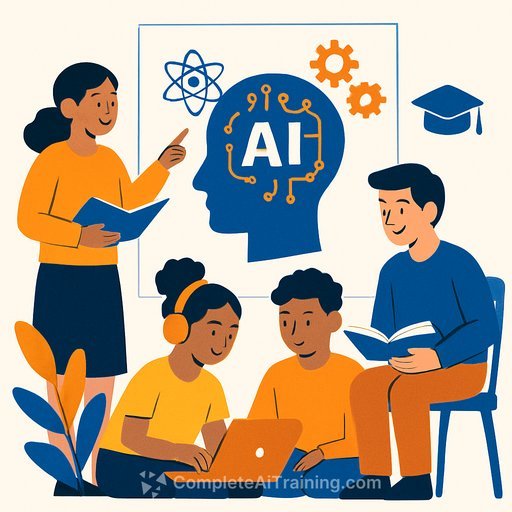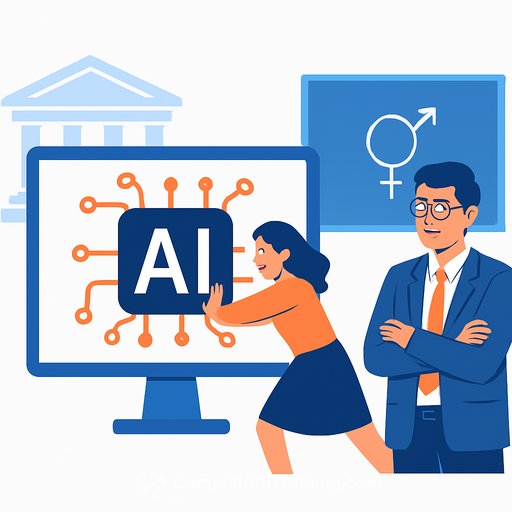Empowering Every Learner: The Role of AI in Inclusive and Accessible Higher Education
AI can do more than streamline operations. Used with intent, it removes barriers, amplifies support for marginalised students, and personalises learning so every learner has a fair chance to succeed.
For education leaders, the priority is clear: apply AI to widen access, not widen gaps. That takes practical tools, ethical guardrails, and a plan for equitable adoption.
The Need for Inclusivity and Accessibility
Inequity shows up in many ways-cost, disability, language, geography, and prior preparation. Traditional models often overlook students who learn differently or lack support systems.
If higher education is to serve all learners, we need environments that adapt to diverse needs and make access the default, not the exception.
AI-Powered Tools and Solutions
- Personalised learning platforms: AI-driven systems analyse learning patterns and deliver content, pacing, and feedback that fit each student. This is especially useful for neurodiverse learners and those who benefit from differentiated instruction.
- Natural language processing (NLP): Real-time transcription and captioning support deaf or hard-of-hearing students. Text simplification, text-to-speech, and reading aids support learners with dyslexia.
- Adaptive assessment and feedback: Automated, responsive grading provides immediate, formative insights so students can correct misunderstandings quickly and stay engaged.
- Language translation and support: Machine translation and multilingual chatbots help international and multilingual students navigate courses, services, and campus life with confidence.
Supporting Students with Disabilities
- Screen readers and text-to-speech: Ensure written content is accessible to visually impaired students.
- Voice-command interfaces: Enable students with mobility impairments to operate devices and platforms independently.
- Cognitive support tools: Provide reminders, focus aids, and simplified content for students with ADHD, autism, or learning disabilities.
Embedding these tools into core systems-not as add-ons-moves accessibility from accommodation to standard practice. Aligning with recognised accessibility standards such as WCAG strengthens outcomes and compliance.
Enhancing Outreach and Enrolment
- Bias checks in admissions: Use algorithms to flag potential bias points in essays, reviews, or decisions, with human oversight.
- Predictive analytics for equity: Identify high-potential students from underserved backgrounds and match them with targeted support.
- Virtual assistants: Automate FAQs and deadline reminders so first-generation and remote applicants can complete processes without friction.
Challenges and Ethical Considerations
- Data privacy: Be explicit about data use, storage, and consent. Follow regulatory requirements and communicate clearly with students.
- Algorithmic bias: Audit training data, test for disparate impact, and keep humans in the loop for high-stakes decisions.
- Human connection: Use automation to free staff time for mentoring and coaching-never as a substitute for belonging and care.
Institutional Strategies for Inclusive AI Adoption
- Invest in staff capability: Build AI literacy and inclusive pedagogy across faculties and support teams. For structured upskilling, explore AI courses by job.
- Co-design with experts and students: Involve accessibility specialists, disability services, and student groups in selection and testing.
- Pilot, measure, iterate: Run pilots across diverse classrooms, gather feedback, and refine based on learning impact and equity metrics.
- Promote digital equity: Provide devices, connectivity, and assistive tech so every learner can benefit from AI-enabled tools.
What To Do Next
- Audit courses and systems for accessibility gaps; prioritise high-enrolment and gateway subjects.
- Set data, privacy, and bias standards before deploying any AI tool.
- Start with low-risk, high-impact use cases: captioning, translation, study support, and formative feedback.
- Track outcomes by student group to ensure improvements are equitable, then scale.
AI can help higher education deliver on its promise: access, dignity, and real opportunity for every learner. With thoughtful adoption, ethical checks, and a focus on student outcomes, inclusivity becomes the default setting.
Your membership also unlocks:






